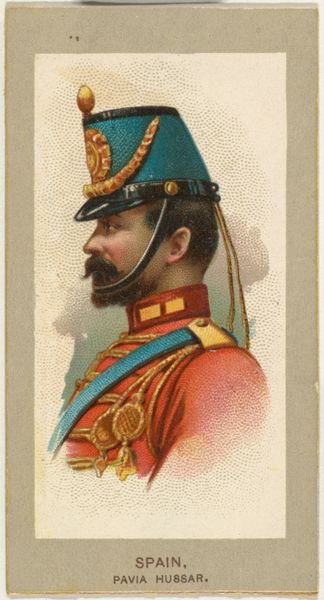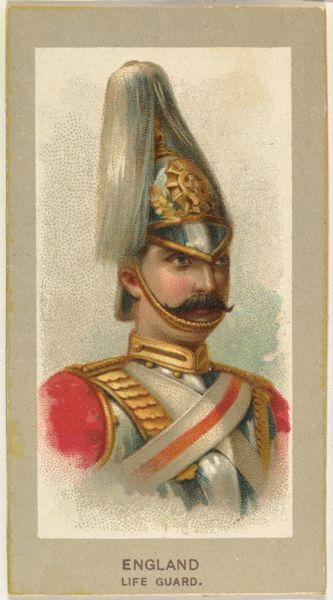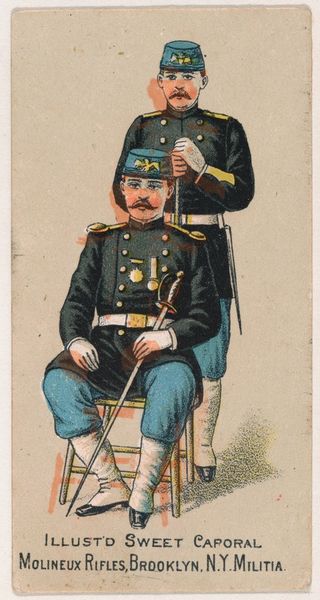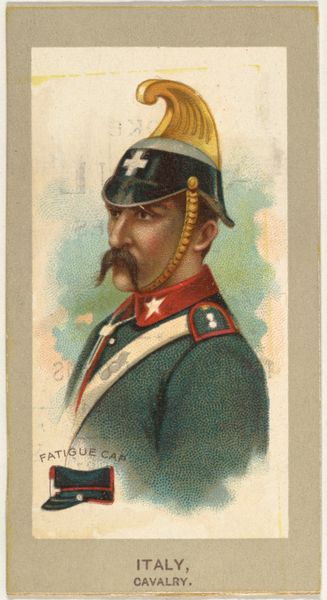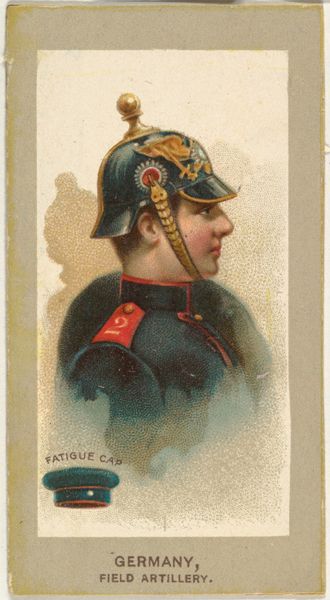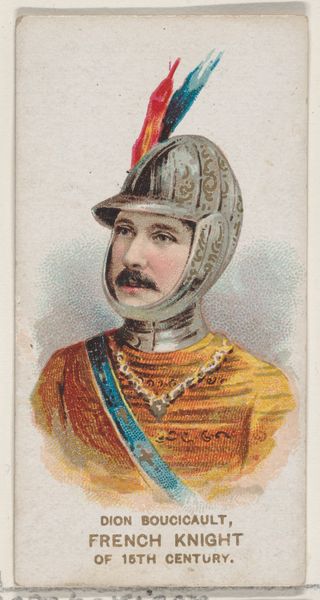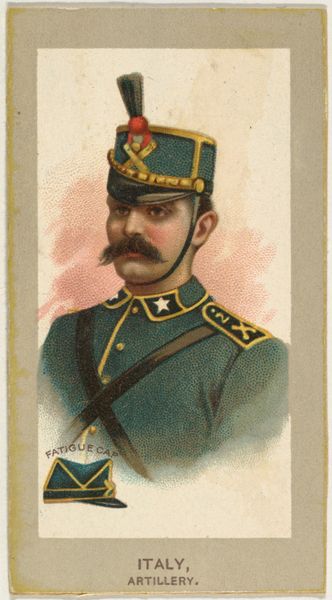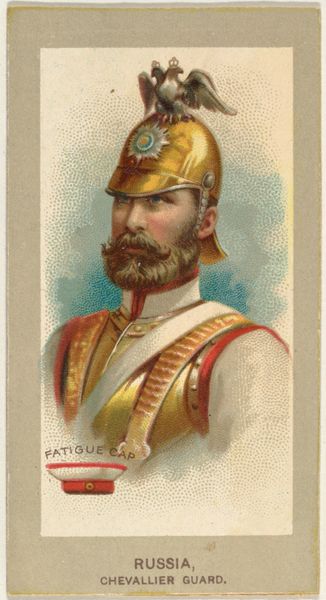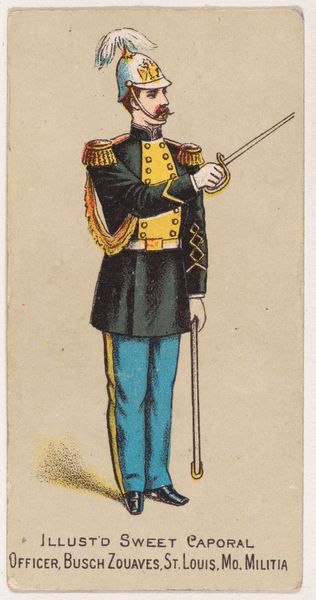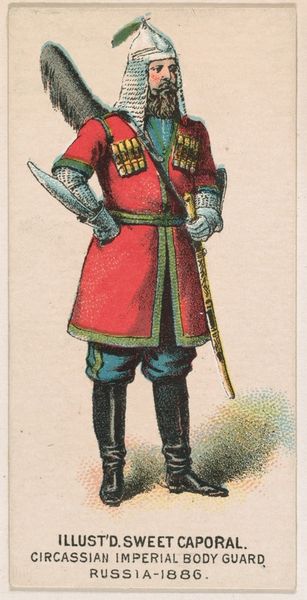
Fatigue Cap, Cuirassier, France, from the Military Uniforms series (T182) issued by Abdul Cigarettes 1881
0:00
0:00
drawing, coloured-pencil, print
#
portrait
#
drawing
#
coloured-pencil
# print
#
caricature
#
coloured pencil
#
history-painting
#
academic-art
Dimensions: Sheet: 3 3/16 × 1 3/4 in. (8.1 × 4.4 cm)
Copyright: Public Domain
Curator: Let's discuss "Fatigue Cap, Cuirassier, France," a print from the Military Uniforms series issued around 1881 by Abdul Cigarettes. It resides here at the Metropolitan Museum of Art. What are your initial impressions? Editor: It feels undeniably… European. Regal, but also vaguely absurd, with that helmet and enormous plume. There's something almost cartoonish about it. Curator: Indeed, though perhaps not intentionally. These were commercial items—cigarette cards. Meant to be collected, traded, and perhaps glued into albums. The drawing, with colored pencils and printmaking techniques, had to be quick, efficient, cheap. The material reality is key to understanding their purpose. Editor: Right, it’s easy to forget these weren't "high art." But think about the image it's projecting: France, the military, power... especially considering the historical moment. Just a decade after the Franco-Prussian War, the image promotes a very specific national and military identity for its French consumers. What messages are being sold alongside the cigarettes? Curator: And to whom? Cigarettes and these cards were, initially, luxury goods becoming increasingly accessible. Consider the workforce needed: from cultivating tobacco to printing the cards. Who labored to create this image of national pride? The production chains of consumerism are rarely visible, but always present. Editor: It brings up questions about cultural exchange as well. A Turkish tobacco company issuing images promoting French military identity… It feels like a complex, even contradictory relationship being brokered. A colonial power represented for consumption. The cigarettes become tools of subtle influence. Curator: Precisely. Even the artistic choices contribute. Academic style portraiture—refined, detailed, idealized—applied to a small, disposable object. The inherent tension fascinates me. The value isn’t in inherent artistic expression, but in reproduction, in multiples, in its accessibility as a token of purchase. Editor: So this wasn't just about cigarettes. These little cards were a reflection of broader societal currents, nationalism, capitalism, global trade. And of course, male bravado embodied through the attire. I’m interested in the relationship between fashion, performance, and social role this depicts! Curator: I concur. The card provides a valuable glimpse into that late 19th-century visual culture. Editor: This quick study helps in thinking more carefully about material circulation in those eras! Curator: And what constituted and continues to constitute an everyday consumable’s power.
Comments
No comments
Be the first to comment and join the conversation on the ultimate creative platform.

